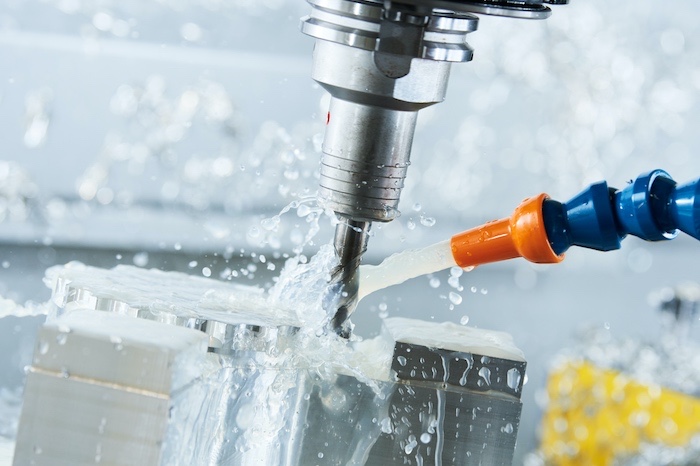The Down and Dirty:
Full Synthetic Metalworking Fluids
Why full synthetic metalworking fluids deliver a high-performing, high-value, cleaner solution for cooling, lubricating, and sanitizing industrial machining
Metalworking is in-demand. From the automotive industry to food manufacturing, producing parts, tools, and blades keep metalworking capabilities a top priority. With that heightened demand comes the need for high-performing, cost-effective machinery processes. And that means metalworking fluids, the fluids that make metalworking work.
But which metalworking fluid is best for your machining? This month’s blog will explore full synthetic metalworking fluids and what makes synthetic metalworking fluids an ideal choice to optimize your machinery’s productivity and efficiency. Read on to learn more about what full synthetic metalworking fluids are and their best-use applications.
What are Metalworking Fluids?
Before we dive into full synthetic fluids, let’s begin with an overview of metalworking fluids. Metalworking fluids, or MWFs, are liquids or oils used to reduce heat and friction, lubricate, and remove metal particles in industrial machining, grinding, and cutting operations.
There are four categories of MWFs:
- Straight Oils
- Soluble Oils
- Semi-Synthetic Fluids
- Full Synthetic Fluids
Each category aims to support cost-effective machining that minimizes downtime, maximizes tool life, produces fewer scraps, and provides the desired end-product.
What are Full Synthetic Metalworking Fluids?

- Passivators
- Biocides
- Blocked Polymers
Which Machining Applications Use Full Synthetic Metalworking Fluids?
The superior cooling qualities of full synthetic metalworking fluids make them ideal for several grinding, close tolerance, and moderate-duty machining applications.
- Cutting
- Grinding
- Milling
- Drilling
- Turning and centerless grinding


What are the Benefits of Full Synthetic Metalworking Fluids?
- Superior Wetting Characteristics
- Rejects Tramp Oil
- Reduces Mist
- Cleaner, Biostable Operations
- High Visibility
- Extends Sump Life
What Should You Consider When Trying A New Full Synthetic Metalworking Fluid?
Ready to start using a full synthetic MWF? Keep the following tips in mind.
- Beware of Blooming Emulsions– Since there is no oil-water emulsion, full synthetic MWFs are easy to mix with water. However, when combined with water, it may effervesce like a bath salt, creating an off-gassing of Volatile Organic Compounds (VOCs). The resulting odor may be strong for a few days but will naturally dissipate.
- Start with a Clean Machine – When starting a new full synthetic MWF, always clean out machinery with a sump cleaner that contains a biocide before introducing a new fluid. Tramp oil additives and fungicides may not be compatible and could create a hard-to-clean problem.
- Spend the $ on Heavy-Duty Grinding – The most inexpensive full synthetic MWFs are typically Amines-based. As the polymer percentage increases in the formula, so does the price. But, if you have heavy-duty grinding, spend the money on a pricier full synthetic MWF for superior part finish and fewer rust issues.





